The local and global on show at London Fashion Week
From a new announcement at British Vogue to Daniel Lee’s case for unbridled British humour at Burberry, the British capital did not disappoint come showtime.
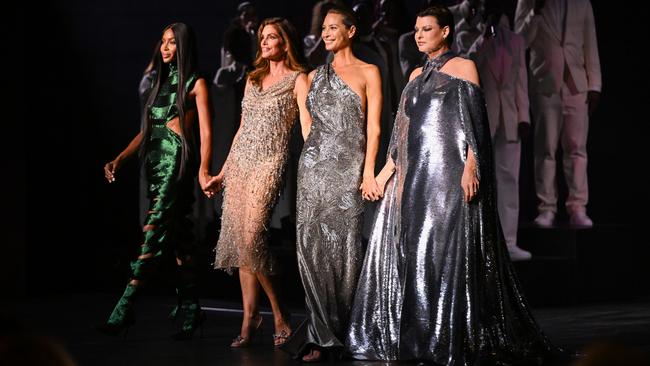
London may have been the second of the big four cities to present fashion shows this month but it certainly wasn’t playing second fiddle. Or so the opening salvo of London Fashion Week asserted.
Kicking off with the global extravaganza that is Vogue World – the newly conceived showcase of fashion and culture first held in New York last year – its second edition was held last Thursday at the Andrew Lloyd Webber-owned Theatre Royal Drury Lane.
At an all-star gathering of the city’s cultural scene – the same that contributes £58bn ($111.5bn) a year to the UK economy – it brought together a glittering cast of British performers including FKA Twigs, rapper Stormzy, Sienna Miller and James McEvoy, who delivered a surprise comedy act.
Baz Luhrmann was creative adviser to the joint venture driven by American and British Vogue and their respective heads Anna Wintour and Edward Enninful – who is due to publish his final issue as editor in March next year – who used their influence to call on a starry guest list. Supermodels including Naomi Campbell, Christy Turlington, Linda Evangelista and Kate Moss joined the Royal Ballet and London Community Gospel Choir for the celebration.
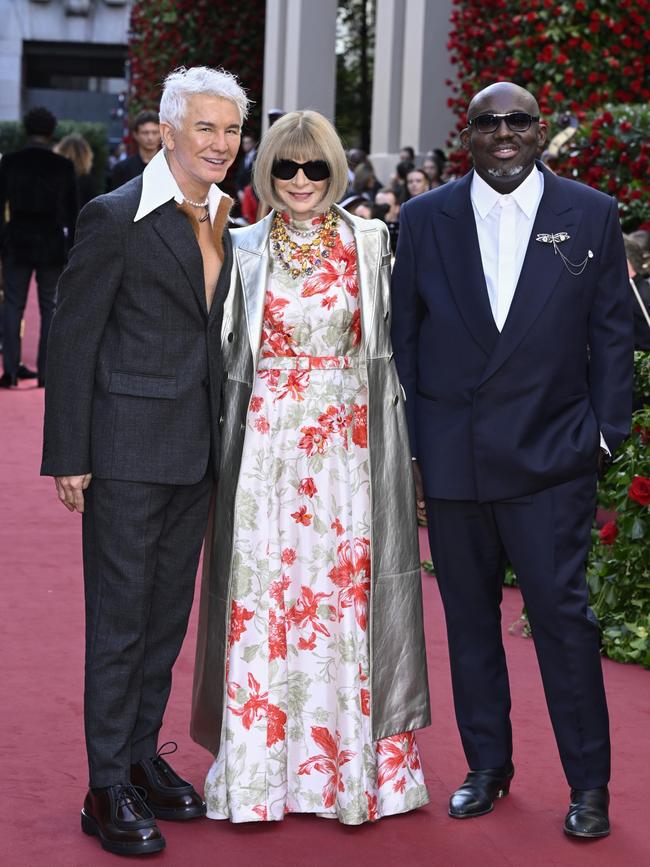
Two exhibitions opening last weekend also reinforced the city’s presence on the world fashion stage: Gabrielle Chanel: Fashion Manifesto at the Victoria and Albert Museum – it was a slightly expanded version of the exhibition at Melbourne’s National Gallery of Victoria in 2021 – and Rebel: 30 Years of London Fashion at the Design Museum in London.
As for the shows themselves, designers once again demonstrated the ideas, originality and youthful energy that have put London on the fashion map. Ideas were in abundance in the always lateral-thinking Jonathan Anderson’s work for JW Anderson.
At Fashion East, the same talent incubator that launched Anderson, could be seen London mainstay Roksanda Ilincic and the much-buzzed Nensi Dojaka.
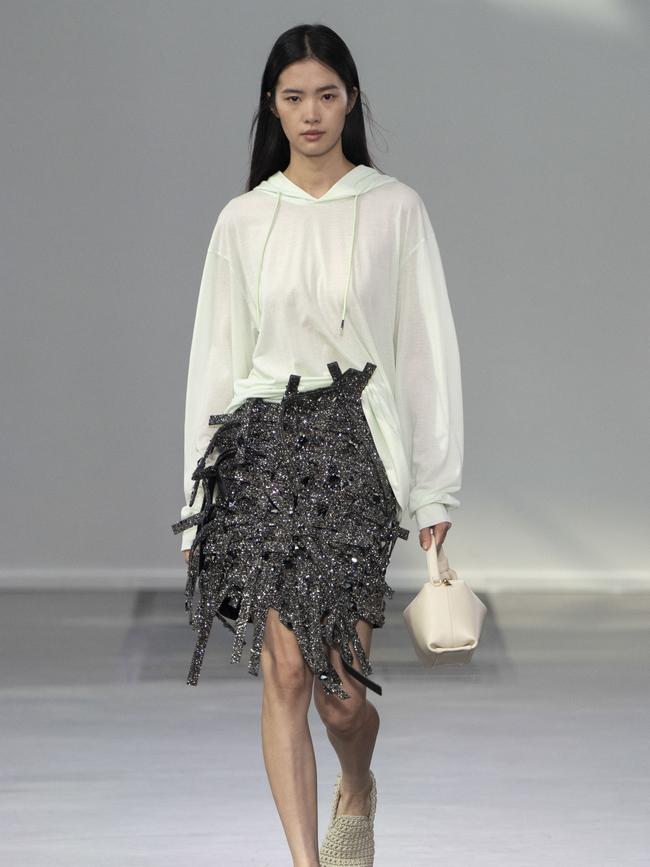
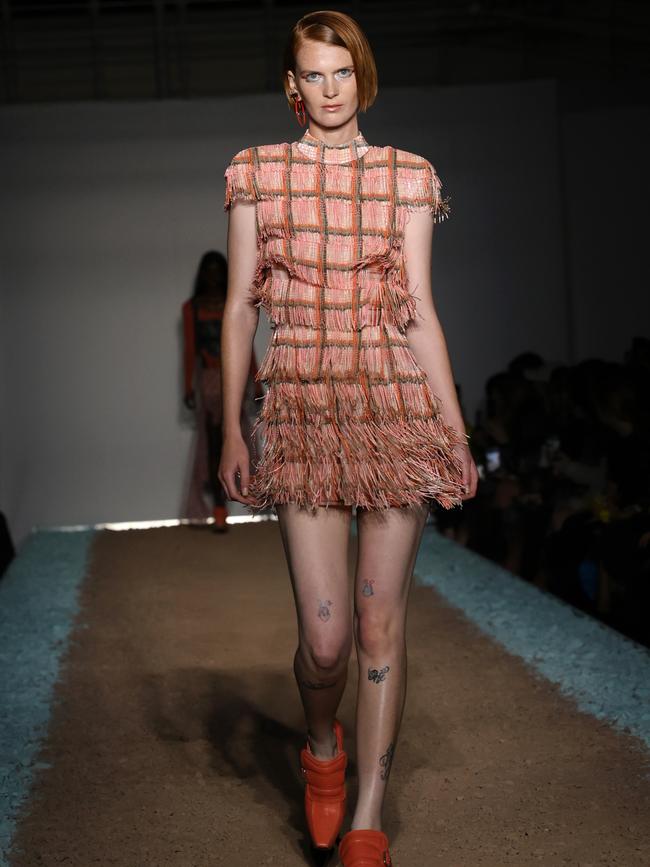
A confident youthful energy underpinned the work of Michael Stewart for his fledgling label Standing Ground, making its mark with slinky jersey evening wear. Only a year old, his label’s lean silhouettes are expressed in the purest forms, winnowed to clean lines and interrupted only by texture hidden beneath the fabric’s surface. Lines of micro spheres like strings of pearls or sci-fi fossils formed what Stewart calls a “biormorphic armour”. It was an original and beautifully subversive take on evening wear.
Many of the emerging labels – colourful Asai, Charlotte Knowles’s Y2K-inflected KNWLS, and Di Petsa’s wet-look dresses – continued to build on their unique aesthetics. But while London is the birthplace of subcultures that have gone on to shape fashion and history – from punk to the club kids of the New Romantics and the rave scene – it is not an easy environment for small labels. Turkish designer Dilara Findikoglu cancelled her show because of financial hurdles, according to some reports, and menswear designer SS Daley also did not show this season, even though he was the recipient of the prestigious LVMH prize last year.
It was left to the more established names to grapple with the other difficult question in post-Brexit England: what defines British fashion today? Ideas around heritage and tradition rose to the surface. Erdem Moralioglu, who views history through a romantic lens, trained his eye on the duchess of Devonshire, Deborah Cavendish, nee Mitford, who strove to preserve the beauty of her home seat, Chatsworth House. His trailing gowns, tea dresses and opera coats were spliced with remnants of the duchess’s faded chintz curtains. They were produced with the assistance and blessing of the current Duke and Duchess of Devonshire, and some carried the tender detail of the embroidery of her great-granddaughter Cecily Lasnet, on display at the show’s British Museum location.
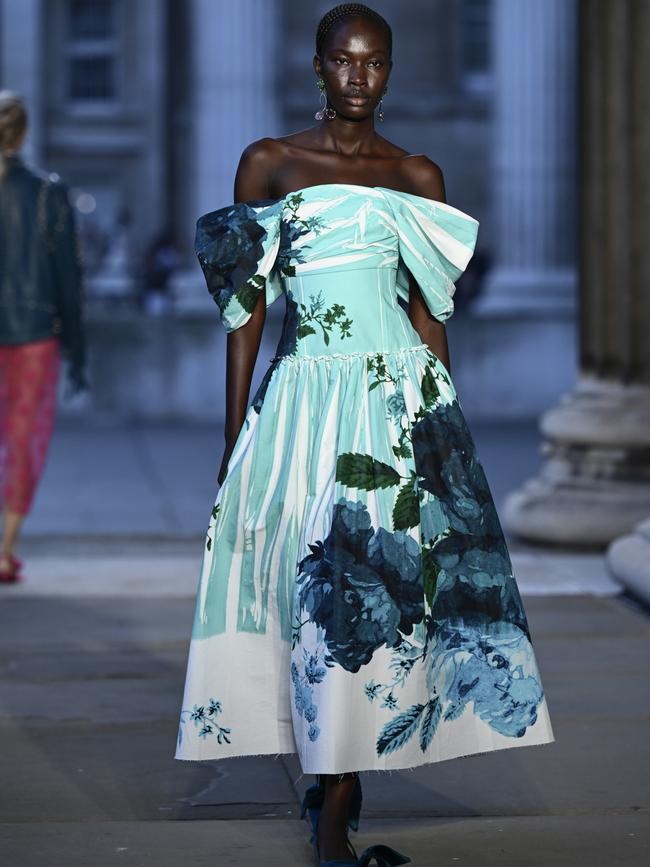
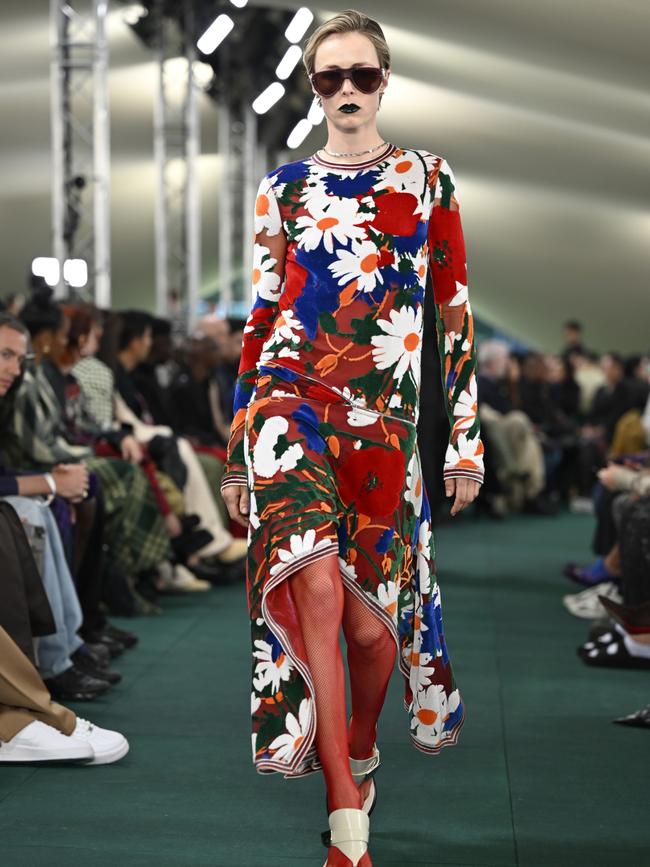
Designers at fashion week made use of some formidably iconic venues, from Christie’s (Molly Goddard) to the Barbican (Roksanda), and one could feel the weight of heritage and history. Designers weren’t shackled by it, however. Instead, those longstanding values and traditions were points by which to navigate a difficult world.
Roksanda drew on the serenity of her native Serbia’s religious costume, with an accompanying opera solo lending extra grace to her regal silhouettes.
Richard Quinn’s grand demi-couture was an emotional elegy to his family and his father, who recently died. Simone Rocha evoked the dignity and preciousness of bridal attire, calling her collection The Dress Rehearsal, while at Chopova Lowena designers Emma Chopova and Laura Lowena-Irons drew on the ancient Cornish Flora Day festival for a broiderie anglaise-laced feminine sense of occasion.
All designers brought an individual aesthetic to their collections, which nevertheless were drawn together by a shared sense of personal commitment.
One of the most anticipated shows of the week, if not fashion month, was Daniel Lee’s second runway outing for British heritage brand Burberry. The inventor of the ubiquitous trench, Burberry has the notion of Britishness tightly woven into its gabardine DNA. Lee spoke before the show about the outdoors being a central tenet of his design principles – hence waterproof, albeit glittering, slip-on mules and sturdy heels that look up to tramping through a soggy London night.
Pragmatism and practicality informed the opening chapter of utilitarian outwear and trenches, updated with a drop-waist, but drawing on the inspiration of the Bright Young Things, the hellraising, blue-blood hedonistic social set of the 1920s. As colourful and densely textured floral midis and slinky red bias-cut cocktail dresses took over from the darker-hued opening, Lee made a case for unbridled British joy and humour.
The fact was emphasised by the presence of a food truck by cult North London cafe Norman’s, styled in the tradition of no-frills working man’s eateries where a few pounds will get you a full English and a builder’s brew. Whether a luxury brand can transcend such boundaries and appeal to a new generation nostalgic for a clear British identity will play out in the boutiques. Burberry hosted its post-show party at its Bond St boutique, ferrying show-goers from Highbury Fields.
And if anyone were to doubt that big things happen at London Fashion Week, champagne corks were popping at the store when the news broke that the new head of British Vogue is to be Chioma Nandi, the first black woman to lead the title. Truly history-making. Fashion doesn’t get much more blockbuster than that.

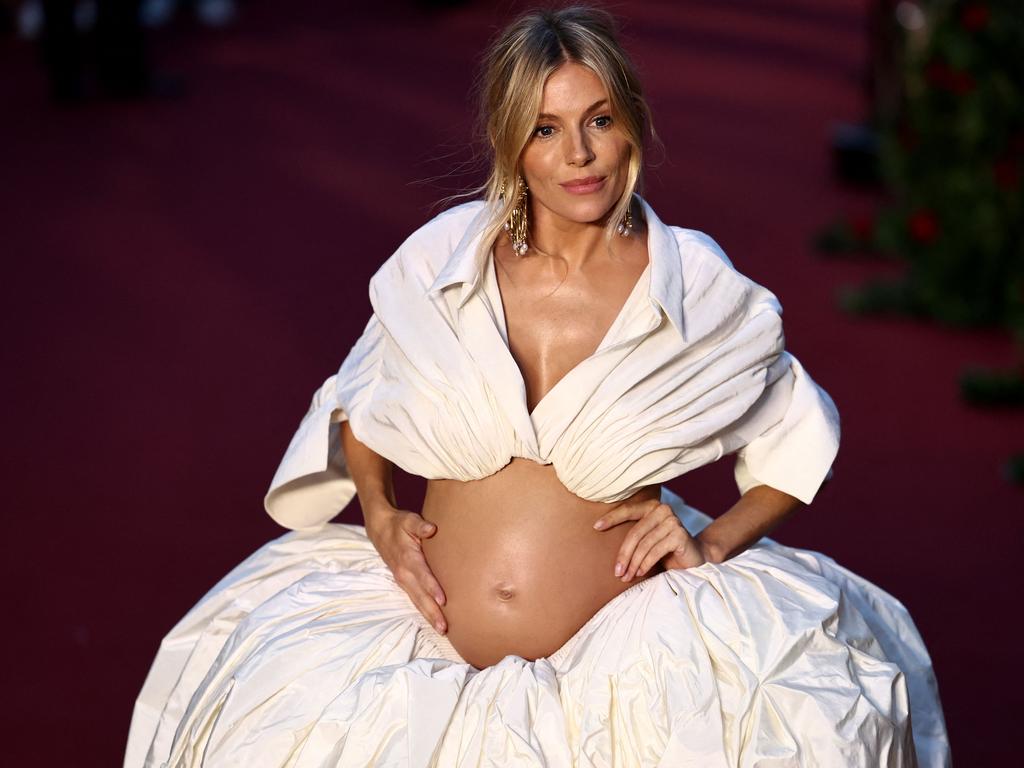
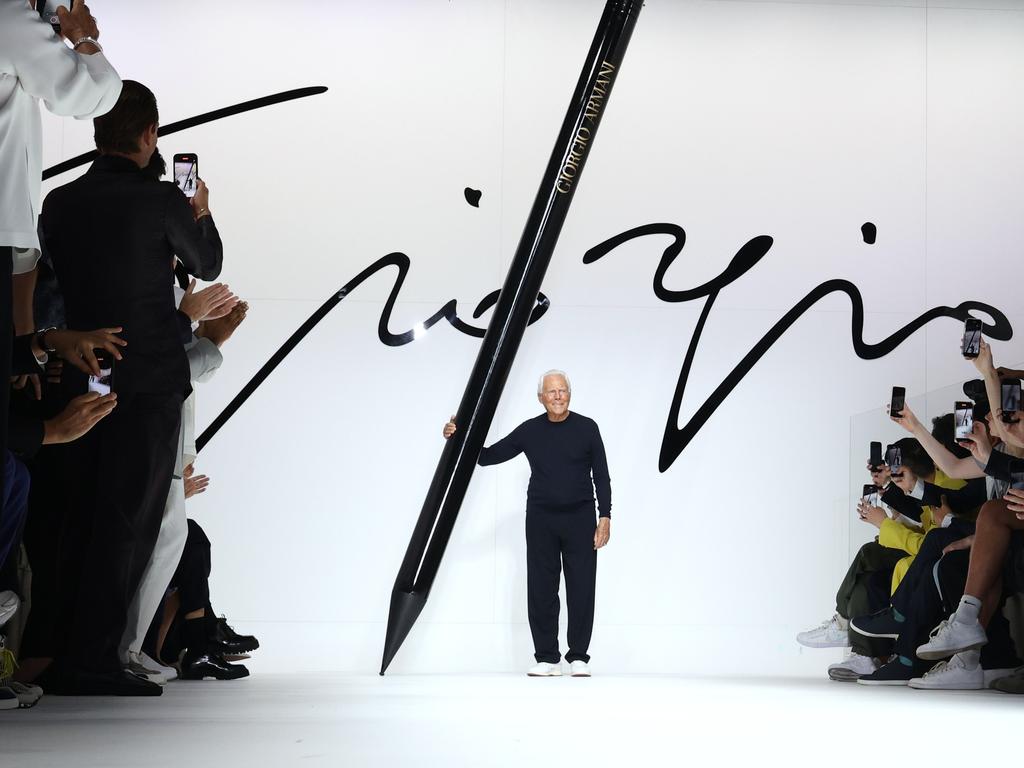

To join the conversation, please log in. Don't have an account? Register
Join the conversation, you are commenting as Logout